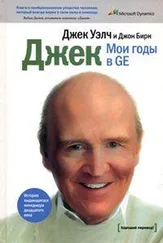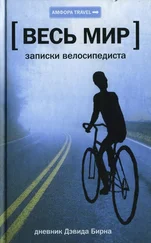E. B. White, Death, and Hope
I read E. B. White’s skinny little book Here Is New York, which was written in 1948 as an assignment for Holiday magazine. I’m not sure many travel and leisure mags would accept a piece like this these days—it concludes with some very prescient meditations on death and war.
When he wrote this essay, a few years after World War II, the UN building had either just been completed or was still being built. He points out that after that war all cities, New York being a prime example, were standing opportunities for massive carnage and destruction on a scale not hitherto imagined: “A single flight of planes no bigger than a wedge of geese can quickly end this island fantasy, burn the towers, crumble the bridges, turn the underground passages into lethal passages, cremate the millions.”
Whether because they were walled, like medieval ones, or because of the sheer numbers they harbored, cities once were secure refuges for their citizens. They were places where people not only met and haggled, but were also, to a degree, protected. Now, with the atomic bomb especially, as White points out, that protective aspect of what a city is has been turned upside down.
But, he notes, just as this shadow begins to loom over great mixtures of humanity like New York, an institution, the UN, is rising to attempt to put an end to this threat. Death and hope simultaneously, as always.
That the United States has clearly and brazenly taken an anti-UN stance in recent years—failed to pay their UN dues and often initiated acts in defiance of UN resolutions and principles—is a bad sign. The United States is not the only country to have done so, but it’s the biggest kid on the block and it sends a signal to all the other kids that such behavior is acceptable, a sign that death and fear is sometimes more powerful than hope, temporarily. The UN is far from perfect. Self-interested parties and nations skew its abilities to perform its mission—its members are human, after all. But the fact that that little ray of hope still exists, right here in mean, jaded New York, and that it cannot be corrupted by corporate lobbyists, religious demagogues, and crooked election rigging—well, there’s something to be said for that.
The new World Trade Center is being built atop a thirty-story concrete windowless bunker. A monument to fear—a symbolic return to a medieval mind-set and walled cities. Even though we are united and connected in so many new ways, some are still building massive walls and fortifications that won’t really protect us from anyone determined and clever enough. Walls and concrete barricades aren’t really an effective means of protection these days—nothing is, really. All that interconnectedness that facilitated much of the explosion of megawealth over the last decade also facilitated the interpenetration of everything, so no one or no building is truly isolated and “safe” anymore. Safety is in getting along.
I bike up to check out a show at the Studio Museum of Harlem. I follow the improved bike path north along the Hudson. It gets less crowded above 100th Street. I turn right on 125th and head east past churches and fried chicken joints, and I run smack into the African American Day parade on Adam Clayton Powell Boulevard. T-shirts are being sold that say I “heart” My Nose (or My Lips or My Hair). Shocking that this affirmation is still needed—that the models of beauty presented to us don’t include a lot of us—and it takes T-shirt slogans to attempt to correct things.
On my way back home I see a nun on Rollerblades going up the Hudson River Park bike path, rosary flying behind her.
How New Yorkers Ride Bikes
There are more New Yorkers riding bikes than ever. And not just messengers. Significantly, a lot of young hip folks don’t seem to regard cycling as totally uncool anymore, which was definitely the case when I began to ride around in the late seventies and early eighties. I sense that we might be approaching a tipping point, to invoke that now clichéd term. New Yorkers are at the stage where they might, given the chance and the opportunity, consider a bicycle as a valid means of transportation—if not for themselves, then at least they will tolerate it as a reasonable means of transport for other New Yorkers. They might eventually try it themselves, and certainly they will accommodate it. They might even support and encourage it.
So, with some tenuous optimism, I decide it might be time to try to give the biking-as-means-of-transport idea a little nudge by organizing some kind of public forum on the subject. I end up spending about a year trying to get a bike-related event off the ground, and am just about to give up when, through a connection with another project, the New Yorker magazine offers to sponsor the event at Town Hall. It is the perfect venue for something like this, having been historically a place where the issues of the day were aired and debated. Race (with Langston Hughes in 1945), birth control (with Margaret Sanger in 1921), and the establishment of the Jewish state of Israel (also in 1945) all were discussed on its stage.
I imagine the event as an evening centered around a meeting, a forum, made up of ordinary people, biking advocates, and city reps from the departments of transportation, parks, health, and urban planning, as well as the police department. Interspersed with this forum would be bike-related entertainment—music, funny bits, and ironic slide lectures. Part of my personal reason for attempting this event is to ask the theatrical question of whether civic engagement, improvement, discussion, and action can be successfully combined with art and entertainment—if culture, humor, and politics can mix, and if making our city a better place to live can be fun. That idea is, for me, almost as important as this bike advocacy business. If the advocacy is going to be boring, then forget about it.
Time passes; there are meetings with city agencies and with Yves Behar and fuseproject, his design company. In one part of the event Yves and his partner Josh will present a new kind of cool bike helmet, something nonsporty types might wear. Yves and company are intrigued by that idea, as is the Department of Health, of all agencies. Why the Department of Health and bike helmets? Well, getting your brains spread out on the street is pretty unhealthy. The Department of Health did a condom giveaway in New York City that fuseproject designed, and they’ve installed dispensers for free condoms in clubs, restaurants, and bars around town (placed near the bathrooms, I imagine). So there’s a preestablished relationship there. Should (corporate) funding materialize they’d love to do a massive helmet or even a bike giveaway—but that’s in the future.
The fuseproject helmet prototype consists of a protective hard shell that can be slipped in and out of various skins—a warm woolen skin with earflaps for cold winters, a porous mesh skin for hot summer days. A very digital-technology kind of idea, variable skins. The idea is that third-party developers—fashion brands, sports gear brands, or anyone who wants yet another advertising platform—might eventually make their own skins and sell or fund them. This design also allows the commuter to lock the shell to the bike and stow the skin—the only part that touches one’s own skin—discreetly in one’s briefcase or handbag.
As good as this is I personally sense that helmets might be an interim step toward integrated urban biking. Although they might always be a good idea, the wearing of helmets implies that cycling is dangerous, which at present it often is in cities like New York and London. But in other cities like Amsterdam, Copenhagen, Berlin, and Reggio Emilia in Italy, the bike paths and lanes are so safe the riders don’t feel the need to protect themselves. Cyclists in these places—kids, young creative types, businesspeople, seniors—also tend to ride upright with an elegant bearing; they’re well dressed, and even sexy. It’s a different attitude than the New York City head-down-into-battle approach.
Читать дальше









